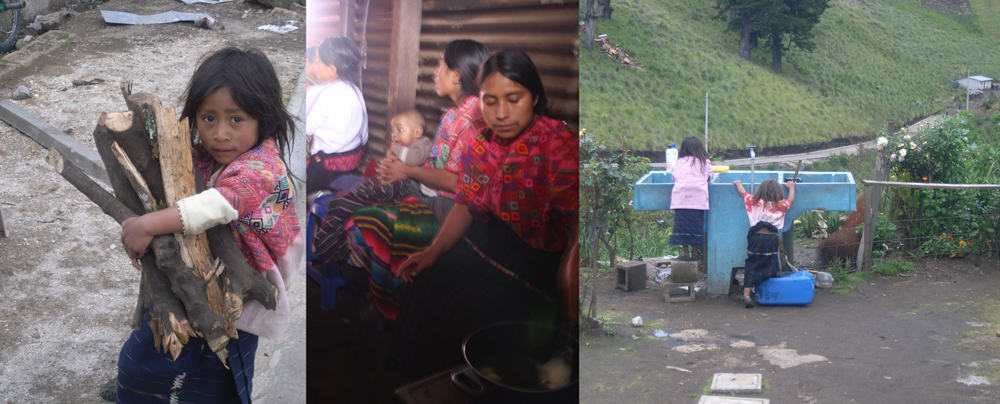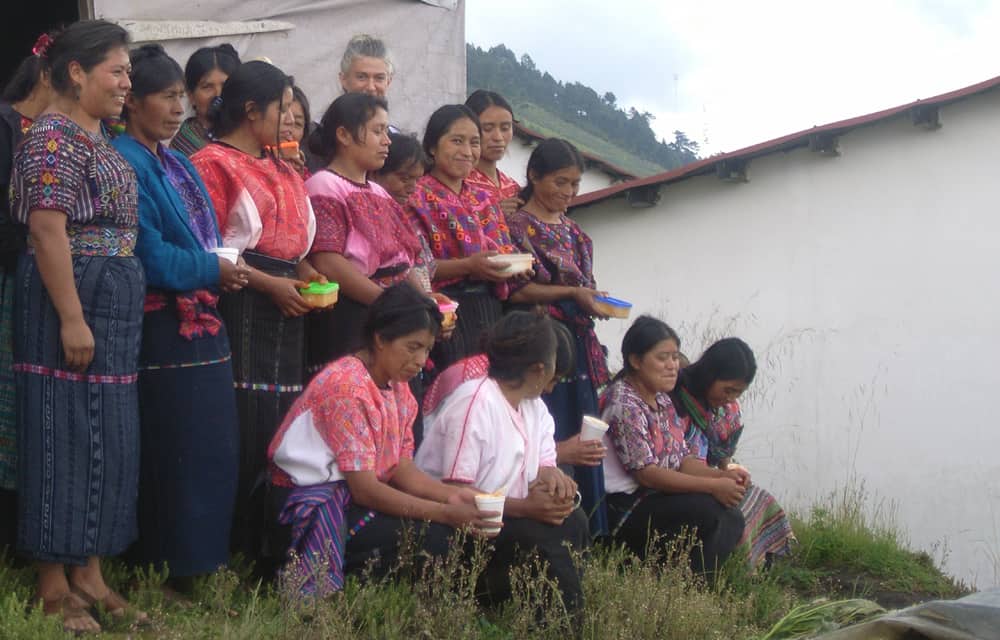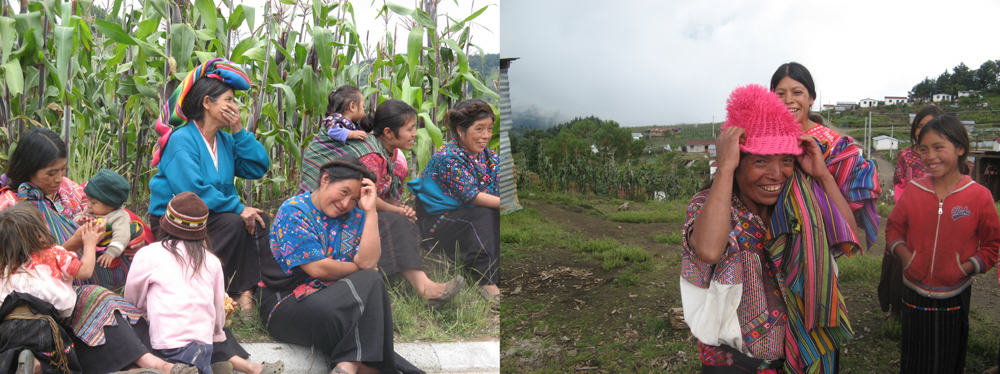In September, I traveled to Guatemala to teach workshops on soap making.

I was invited there by the organization Oxlajuj B’atz’, based in Panajachel.
One of the workshops was in the village of Xeabaj Dos.
This community of people has been twice relocated in less than eight years.
Their original village, Santa Catarina Ixtahuacan, was completely destroyed by Hurricane Mitch in 1998. After reestablishing themselves high up in the mountains, Hurricane Stan came in 2005 and wiped out the new settlement. Many of the newly built homes in Xeabaj Dos have walls constructed from USAID tarps. They have a large, sturdy school, and just got electricity for the first time a few months ago.
You can see a photo essay here about the first relocation.
In the center is the structure we used for our workshop:


One of the goals of Oxlajuj B’atz’ is to provide opportunities for women to learn new skills and improve upon those that they already possess with the goal of developing more work opportunities, better income-earning potential and greater access to local and global markets.
The women in this village had requested to learn how to make soap, both for their own use and as a potential new product.
Soapmaking can be precarious; it involves a chemical reaction with a very caustic substance: lye. Measurements and temperatures have to be exact, and safety precautions have to be taken. Our experience proved one can still have great success soapcrafting in fairly basic conditions.
To make soap, you need three basic ingredients: an oil or fat, water, and sodium hydroxide (lye).
We started by heating up the oils over a wood-burning stove, and measured out a proper quantity of water…

Lye is a strong base, or alkali, and can cause severe burns if it splashes on your skin or in your eyes. When handling it, you must use protective gloves and safety goggles.

When it is added to water, it also creates toxic fumes. Make sure you have plenty of ventilation when mixing your ingredients!


After the lye, water, and oil have been mixed, the mixture is poured into molds and allowed to sit for 2 days.
These women had a particular interest in making soap that had medicinal qualities. Among the plants and herbs that grew in the area, we experimented with adding eucalyptus, camomile, calendula, lavender, and achiote (annatto) as a colorant.
Lye will react with anything in its path. In order to retain the natural properties of herbs and additives, it is necessary to add them when the soap compound is stable enough. This process is called ‘rebatching’.
After the cakes of soap have rested for a couple days, they should have a ph balance neutral enough to come in contact with delicate herbs or hearty hands. The soap is then cut into small pieces, re-melted, and the dried crushed herbs are added.
Once this mixture is poured again into molds, the soap should be ready to be used in 2-4 weeks, after all the lye has neutralized.
Soap making is a new process for me, too, and the excitement at the workshops was contagious.
After all, it was the request of the women of Xeabaj Dos to be taught how to make soap that inspired me to learn how to do it myself. I consider this a great and rich collaboration.
I hope this is just the beginning of a greater involvement on my part in bringing materials and information on soap making to the women working with Oxlajuj B’atz’.

I’d like to thank everyone involved for their invitation, participation, enthusiasm, patience, and humor.
See you soon!

Photo credits: Eddie Haynes, Erica Harris and Taryn